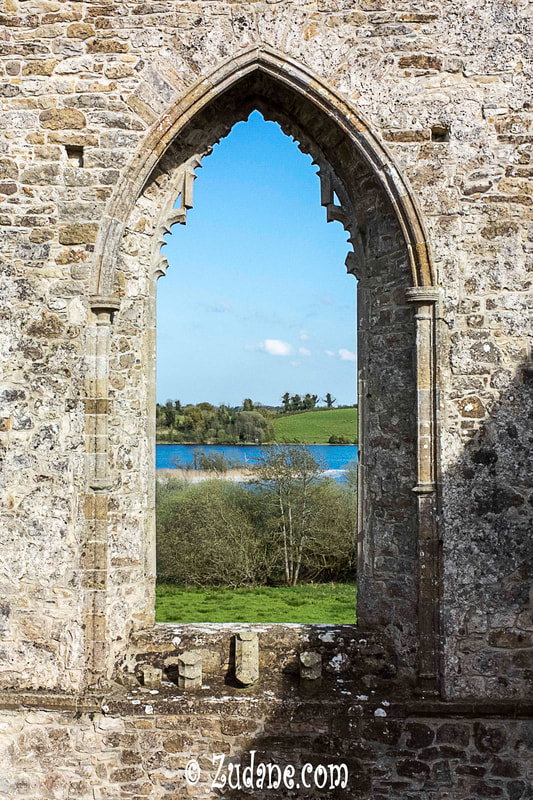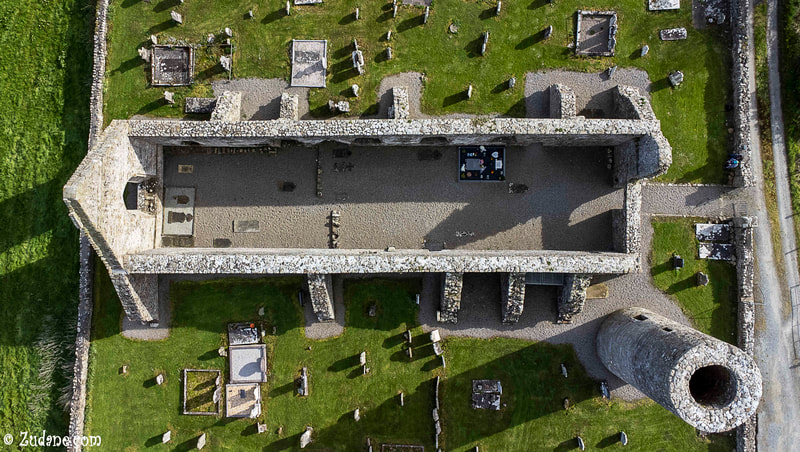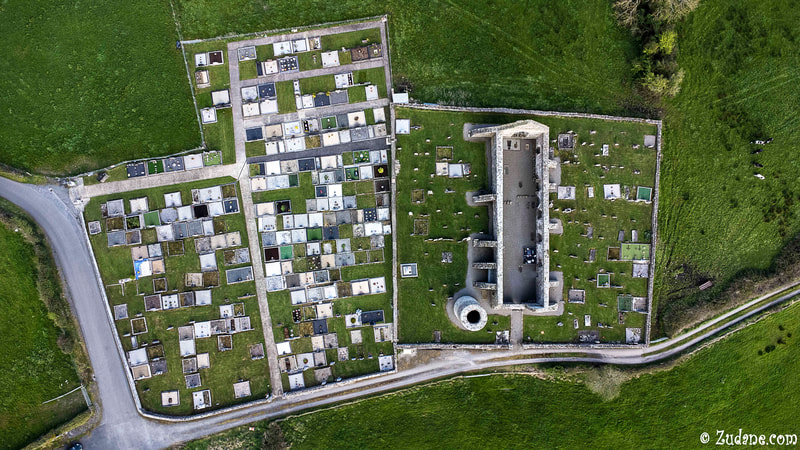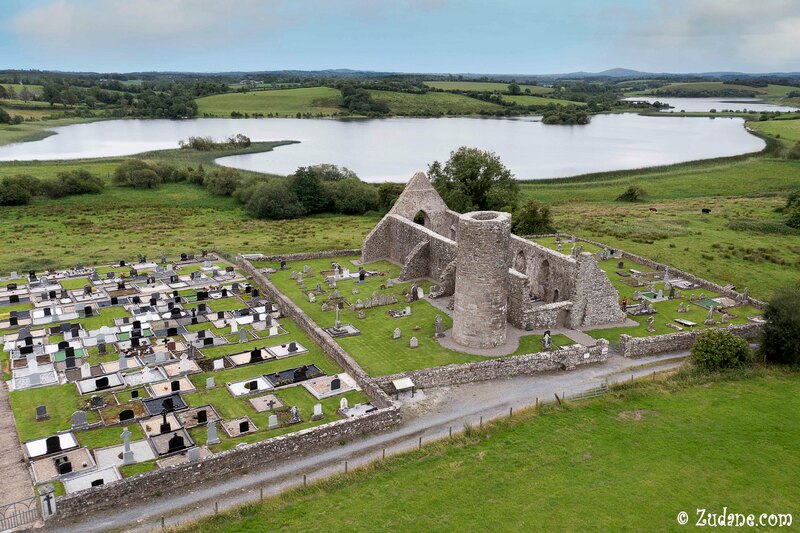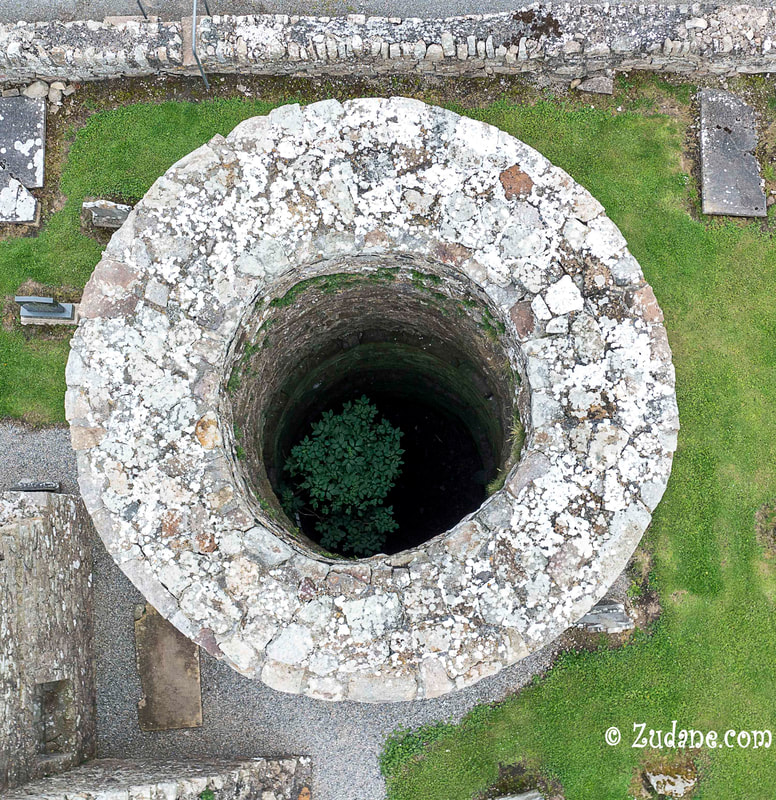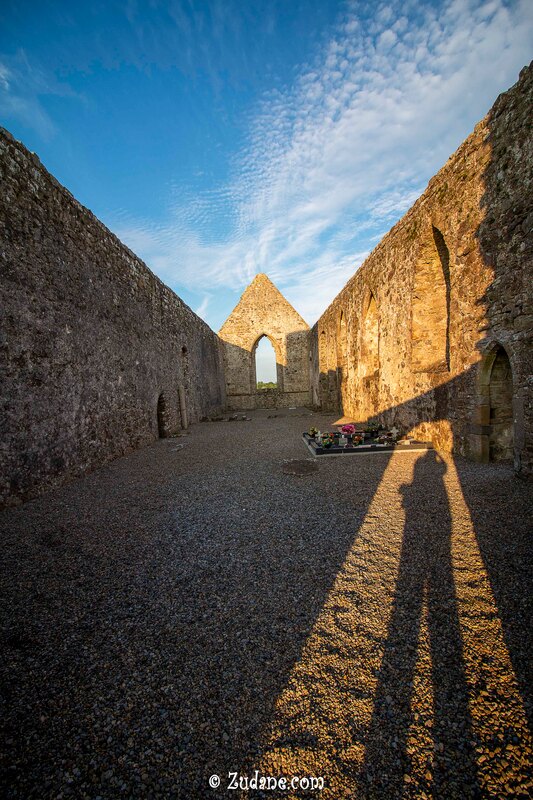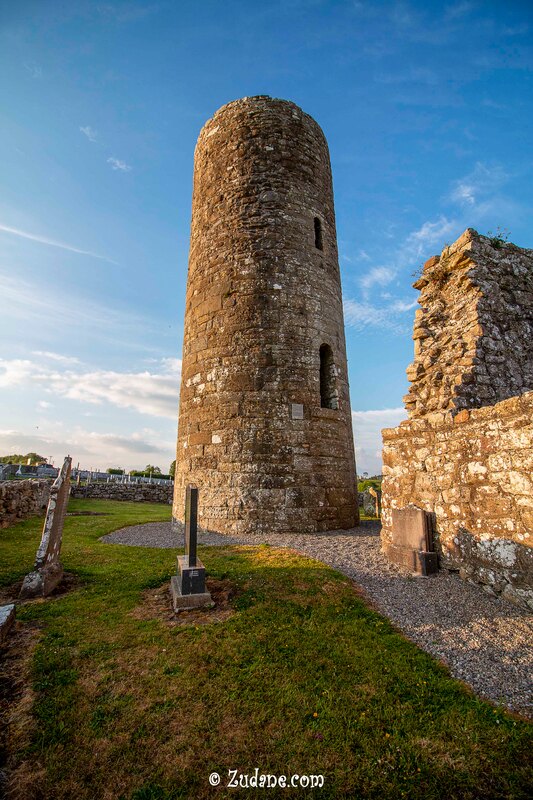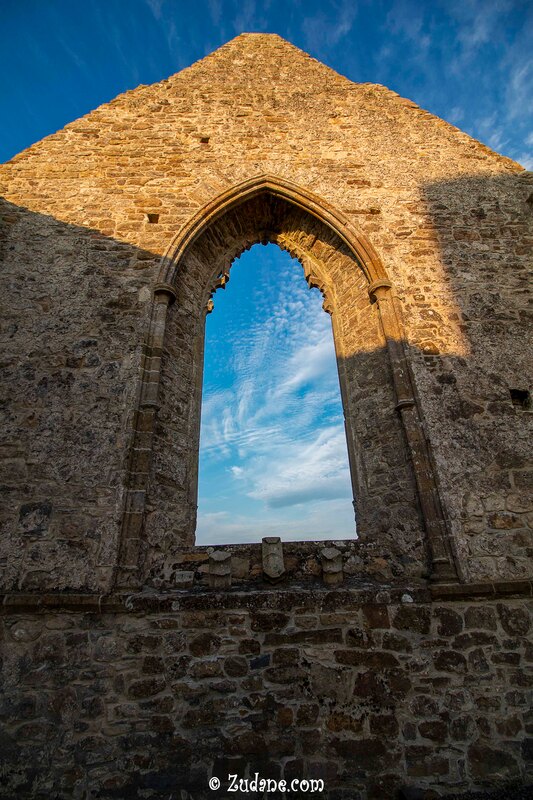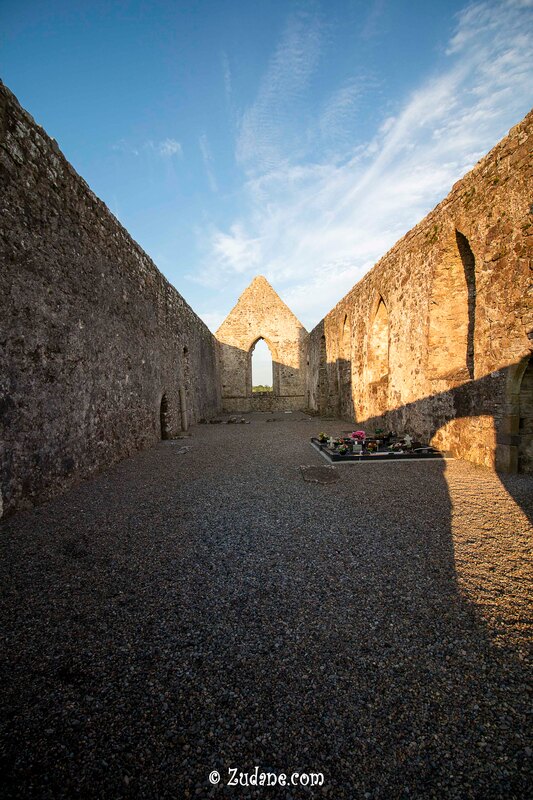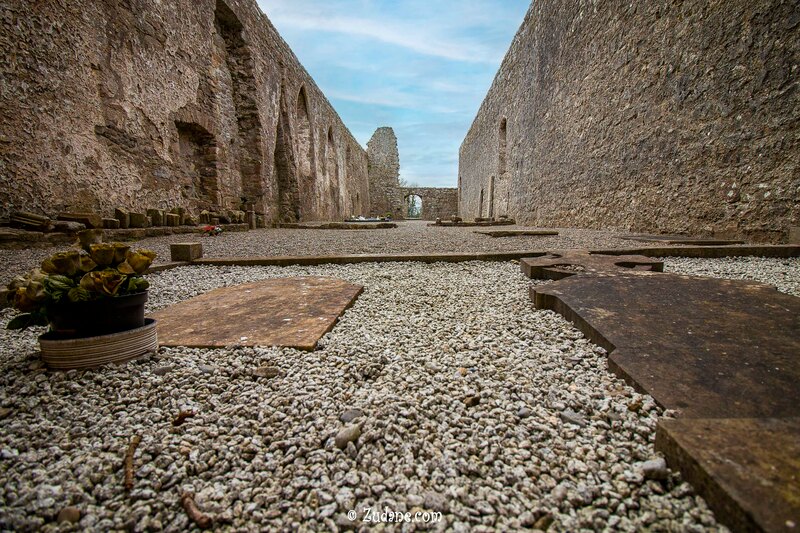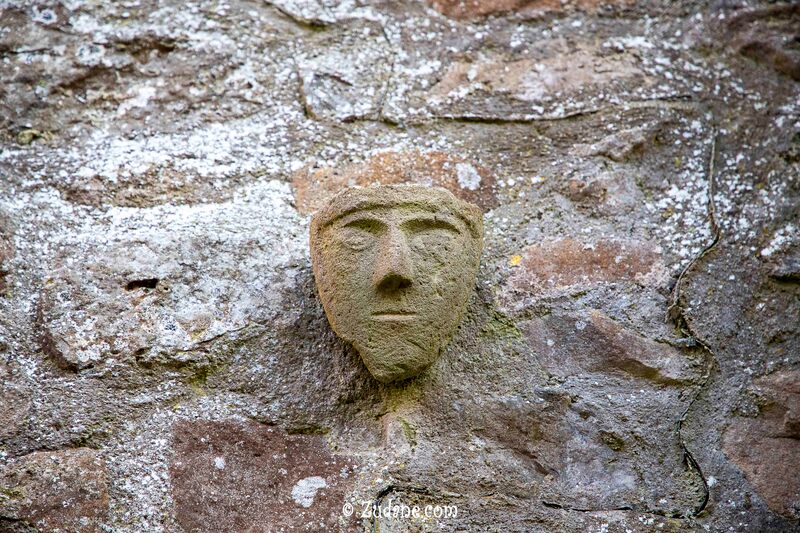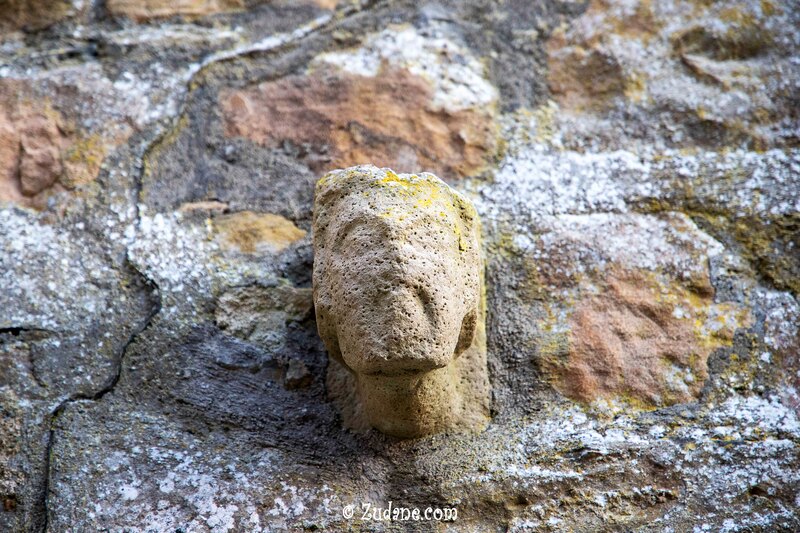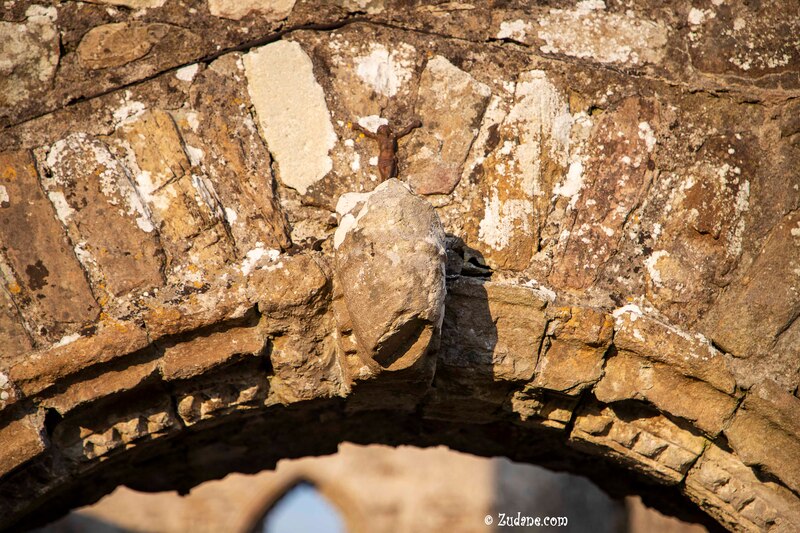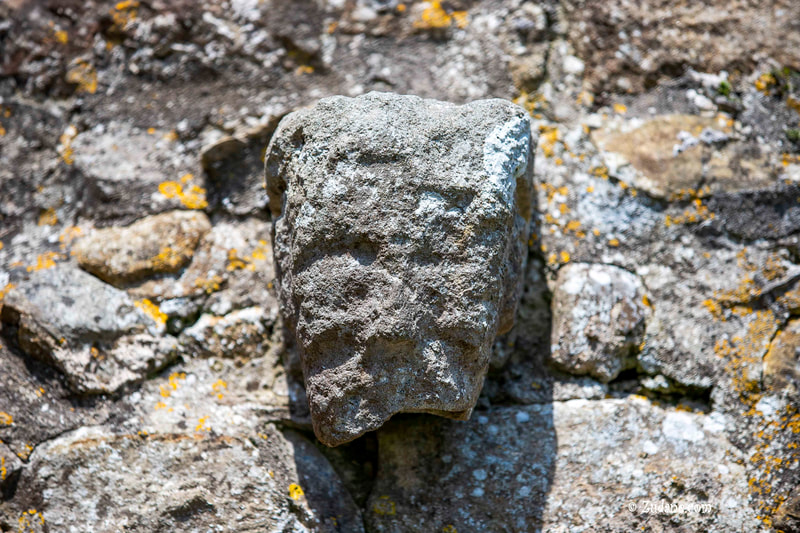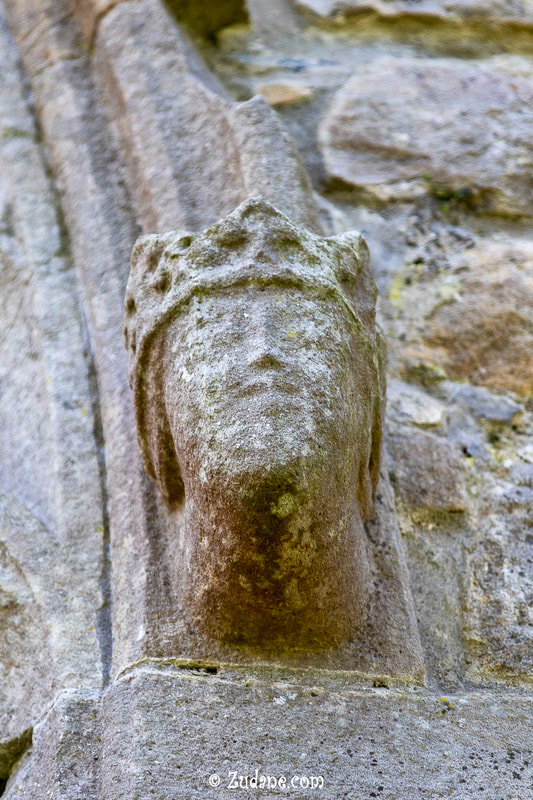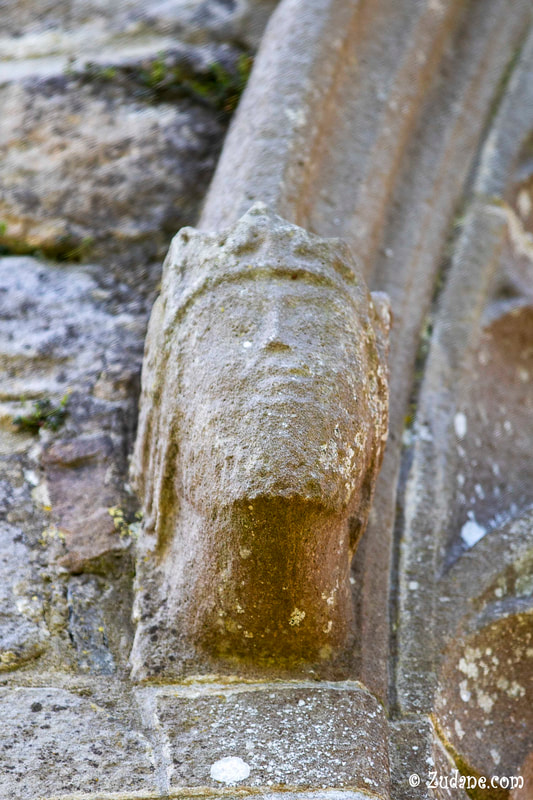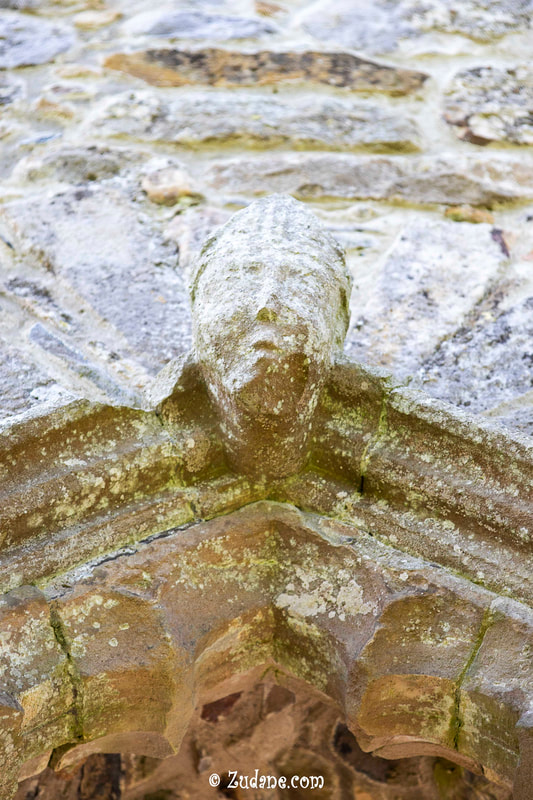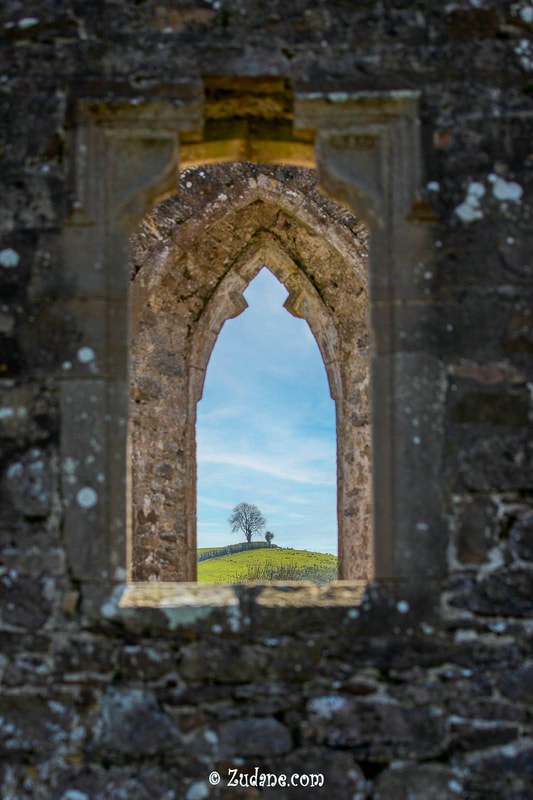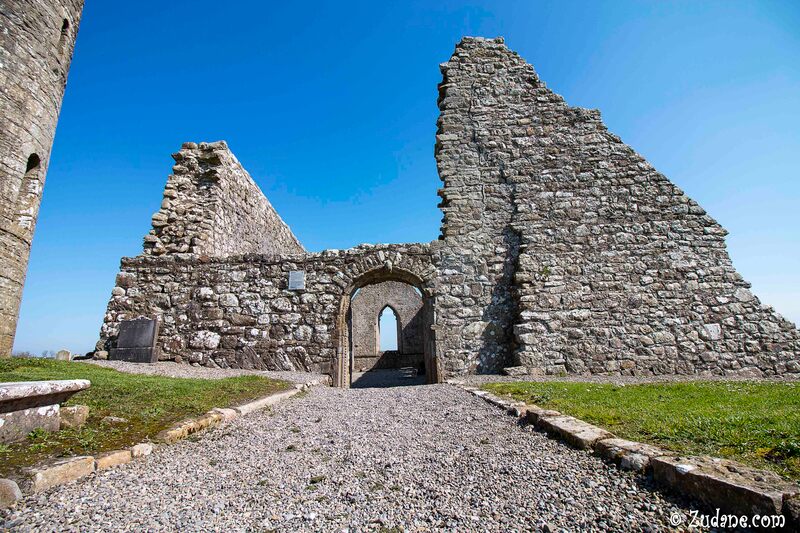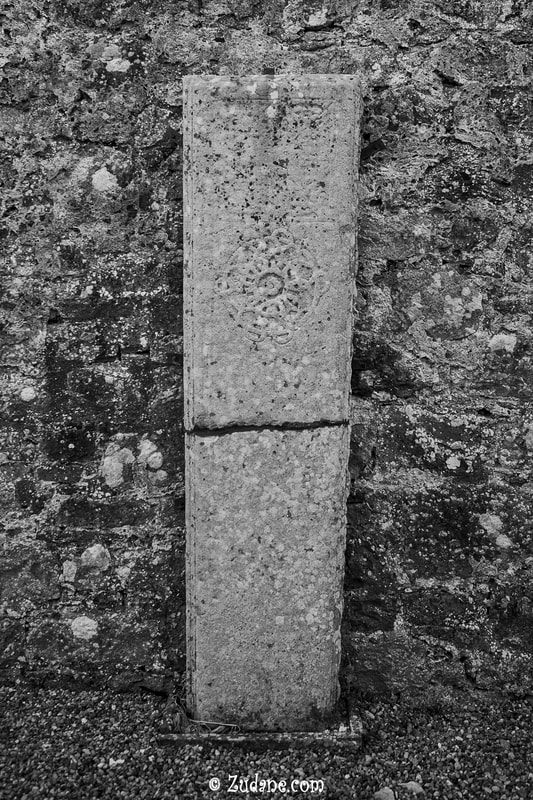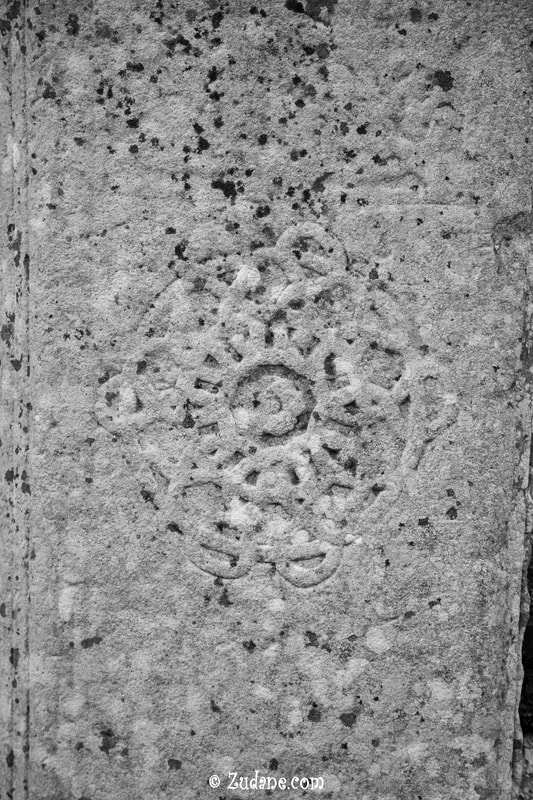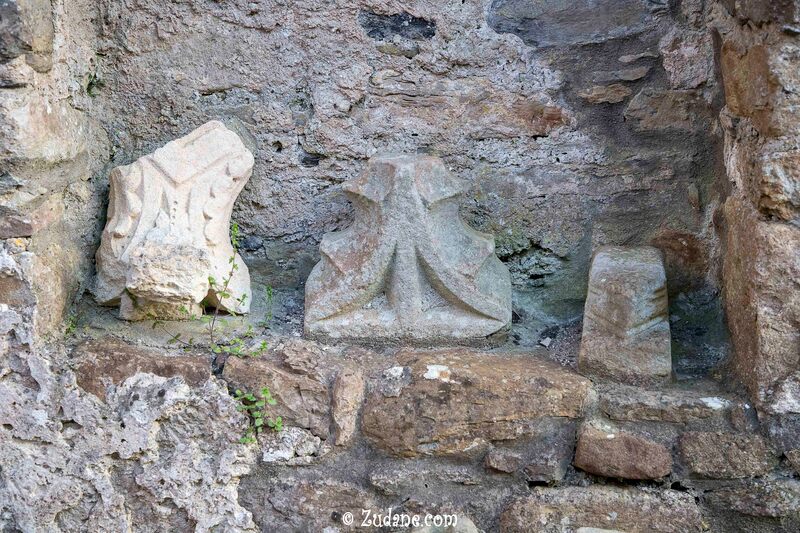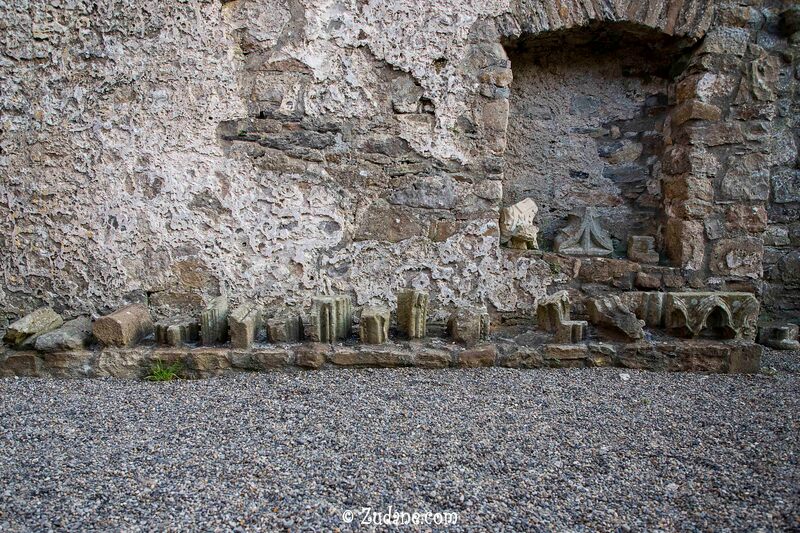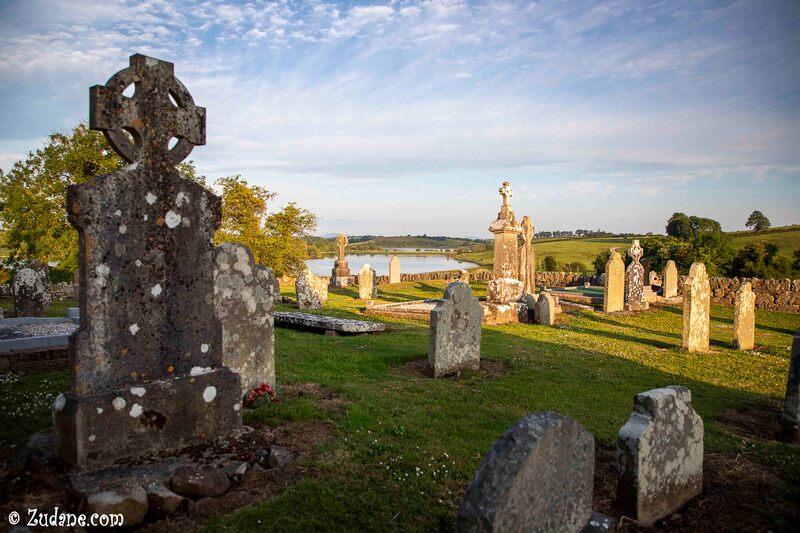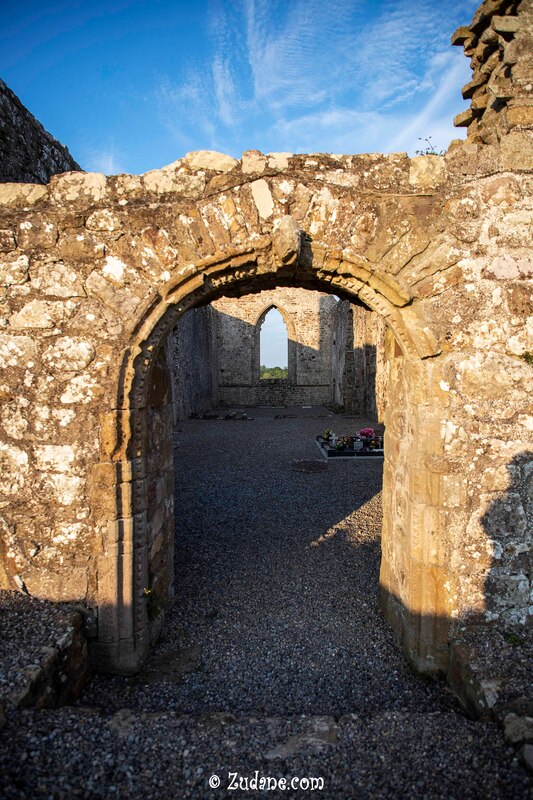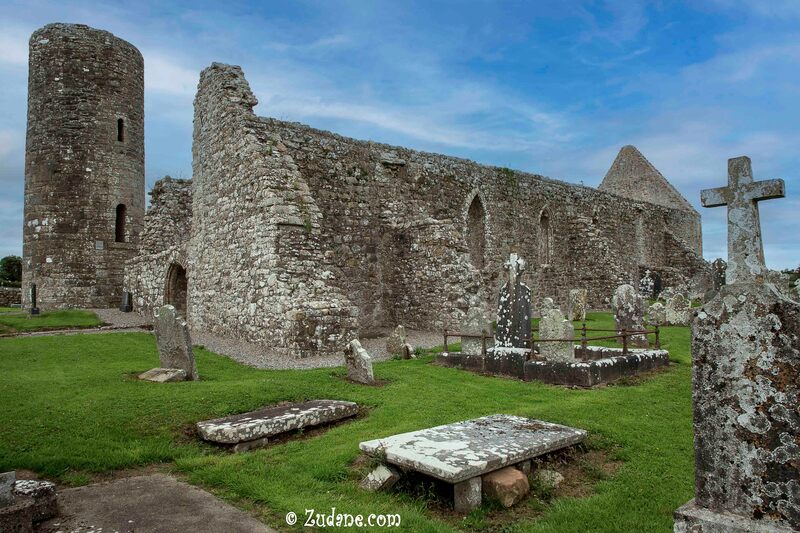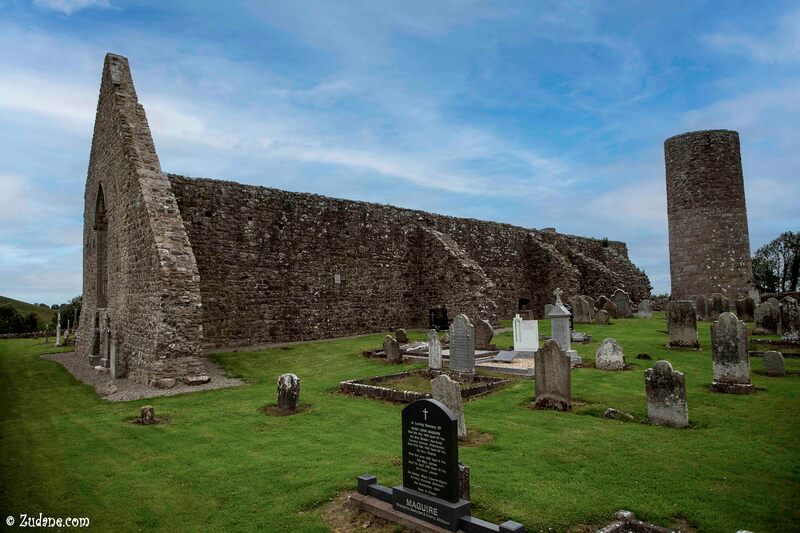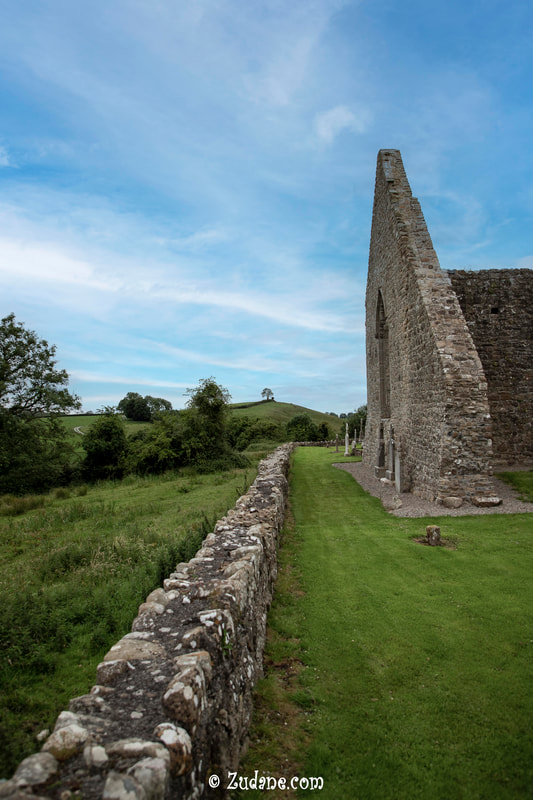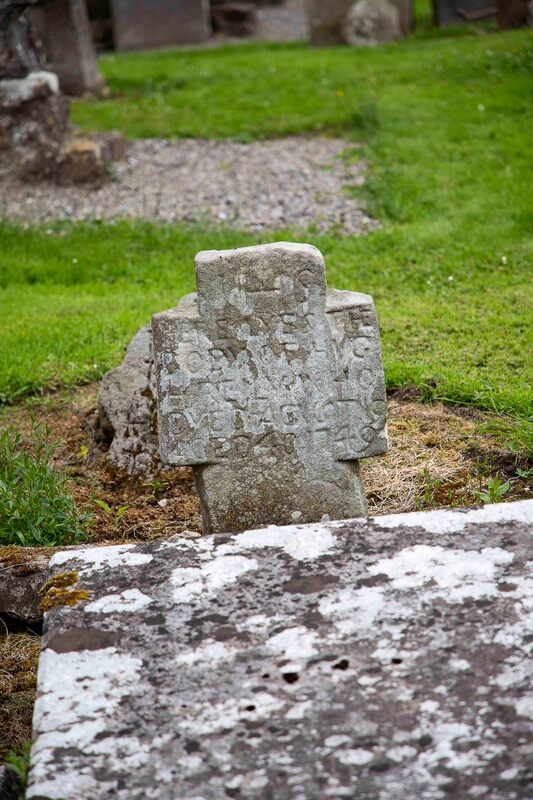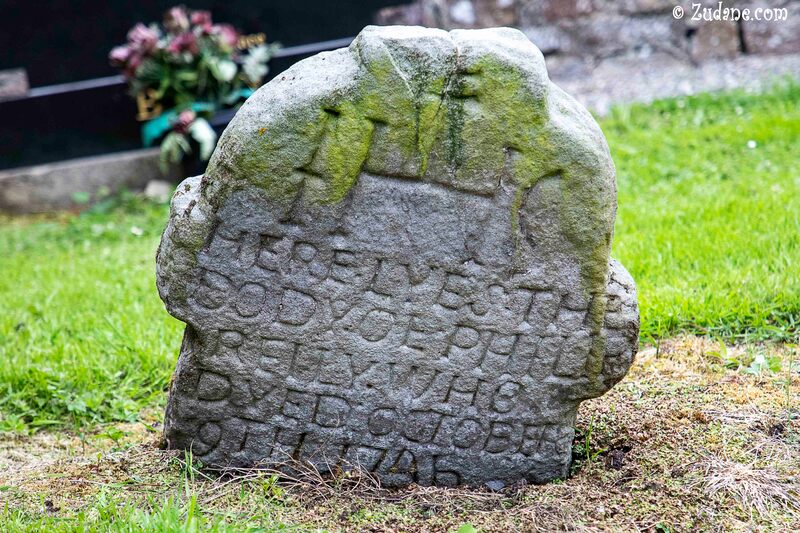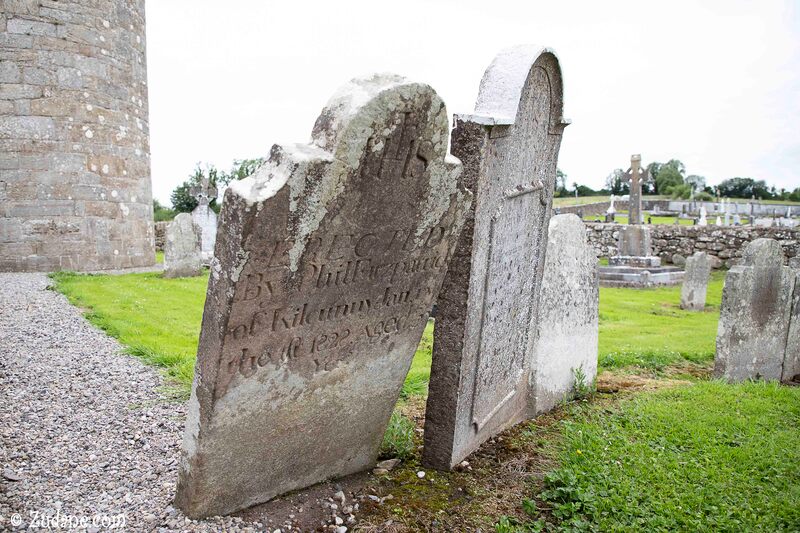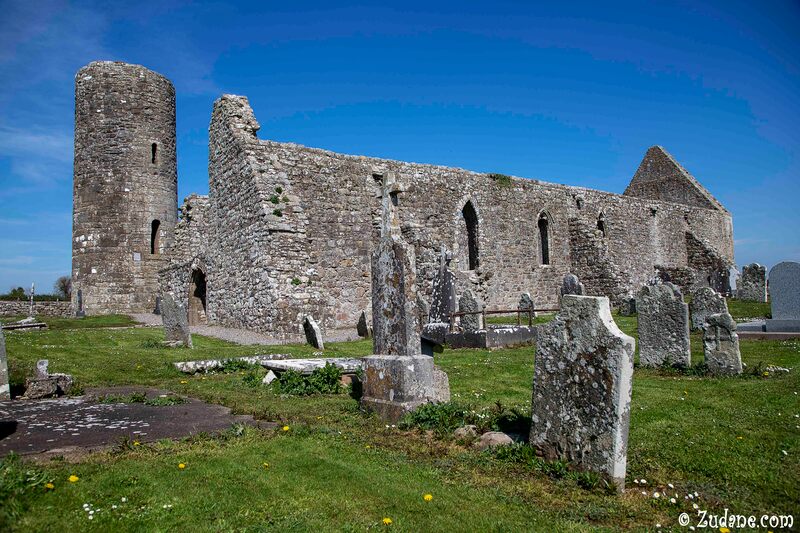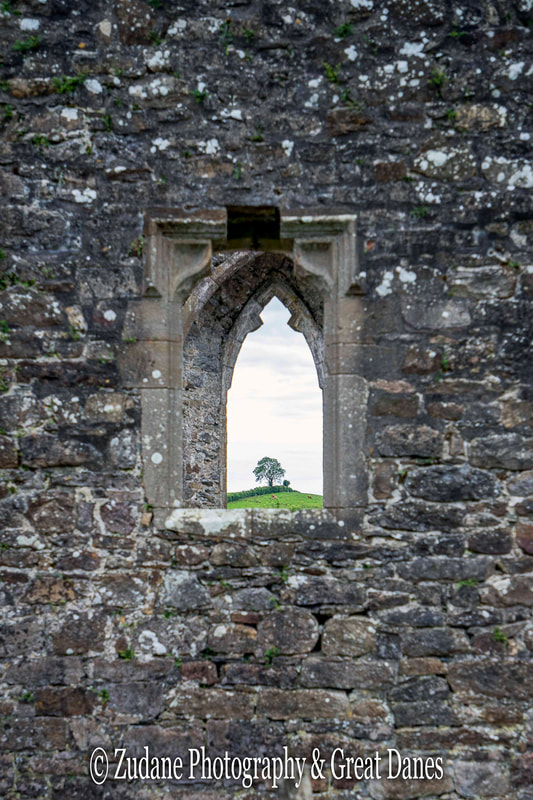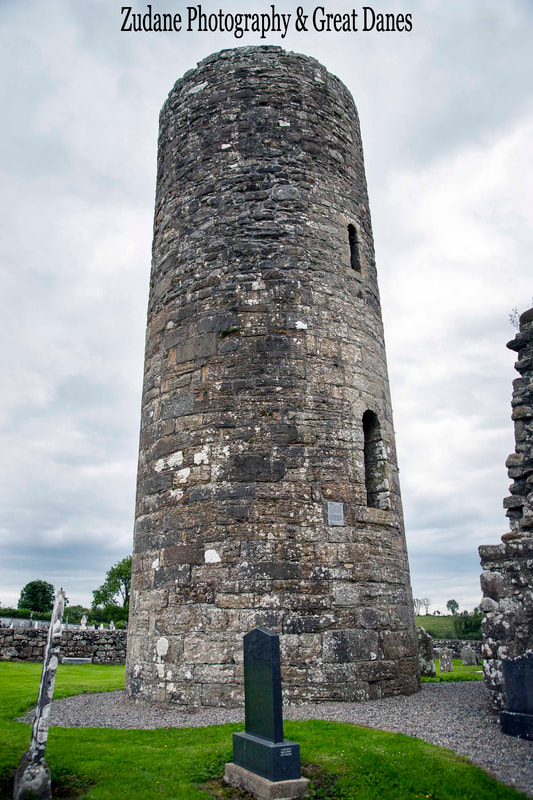DRUMLANE ABBEY CHURCH AND ROUND TOWER
Drumlane Monastery The first monastery at Drumlane was founded in the 6th century, either by St Colmcille or St Maodhog. In the mid-12th century it was re-founded as a priory of Augustinian Canons, Regular- priests who lived according to the monastic rule of St Augustine. The buildings suffered extensive fire damage in 1246. The main building to survive from the early monastery is the Round Tower. The well-built lower part dates from the 10th or 11th century; later - possibly in the 15th century-the upper section was added. Two small animals -a hen or a pheasant and a cock -are carved on the north side and there is a carved stone molding around the doorway. There are many phases of building in the church, but what survives is mainly from the 15th and 17th centuries. Inside are two niches In which the tombs of unnamed patrons were placed. The east window originally had complex stone tracery: on the outside of the window are carvings of the heads of two kings and a bishop.
Drumlane Monastery The first monastery at Drumlane was founded in the 6th century, either by St Colmcille or St Maodhog. In the mid-12th century it was re-founded as a priory of Augustinian Canons, Regular- priests who lived according to the monastic rule of St Augustine. The buildings suffered extensive fire damage in 1246. The main building to survive from the early monastery is the Round Tower. The well-built lower part dates from the 10th or 11th century; later - possibly in the 15th century-the upper section was added. Two small animals -a hen or a pheasant and a cock -are carved on the north side and there is a carved stone molding around the doorway. There are many phases of building in the church, but what survives is mainly from the 15th and 17th centuries. Inside are two niches In which the tombs of unnamed patrons were placed. The east window originally had complex stone tracery: on the outside of the window are carvings of the heads of two kings and a bishop.
